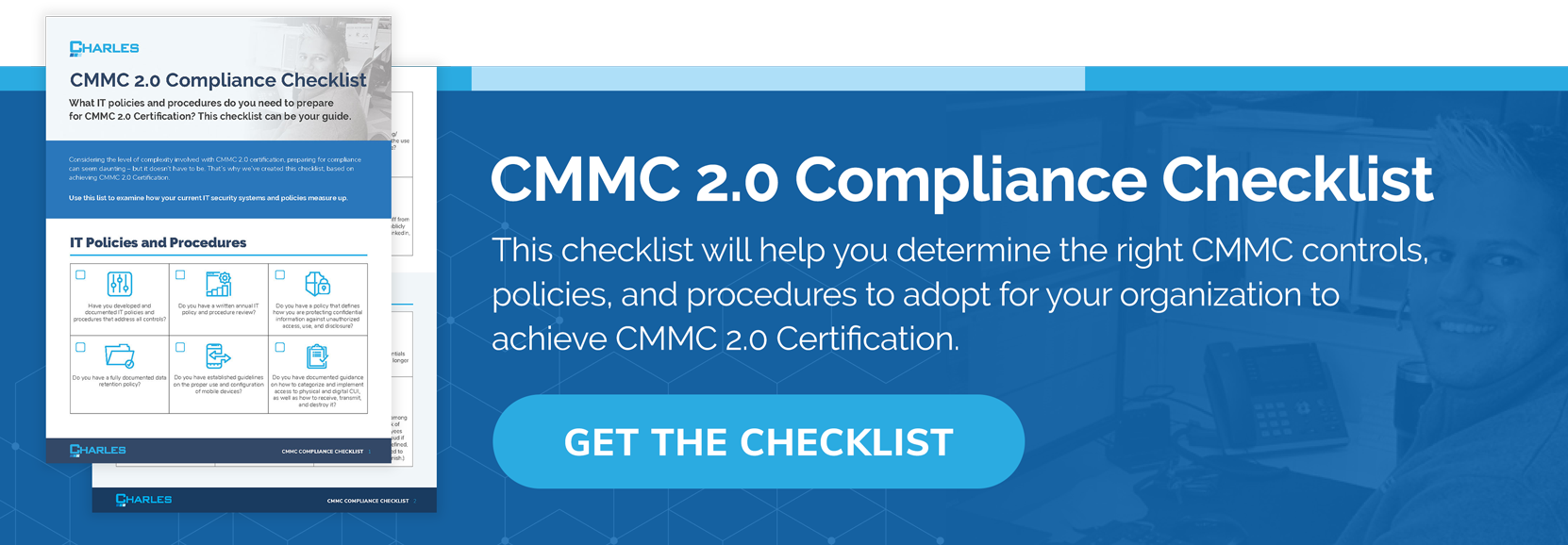Change is the only constant in the world of cybersecurity. The threat landscape continues to evolve as hackers and scammers grow bolder and more consistent as they find ways to obtain confidential data. Reactive measures, such as antivirus software, are no longer nearly enough to protect your organization and the data in its care.
Perhaps one of the most alarming trends in recent years is the rapid uptick of state-sponsored cyberattacks. The digital world is now very much the new theatre of war, with countries often launching devastating cyberattacks against critical infrastructure belonging to rival states. The US Department of Defense (DoD) is, unsurprisingly, one of the most popular targets.
What is CMMC version 1.0?
The cybersecurity maturity model certification (CMMC) is the DoD’s response to the worsening cybersecurity landscape. It’s a unified standard for protecting data across the entire DoD supply chain, which comprises around 300,000 government and private organizations across the US and beyond. CMMC version 1.0 was rolled out on January 31, 2020, and all DoD contractors are expected to comply by the end of the year.
Organizations must have a third-party audit of their current information security infrastructure before they can be awarded the certification. Certifications span five levels, with each level requiring compliance with the level preceding it. A CMMC level 1 certification indicates basic cybersecurity hygiene, while a CMMC level 5 certification indicates implementation of advanced and proactive security controls and a continuous effort to optimize them.
CMMC levels are broken down into controls spanning a total of 17 domains, such as physical protection and asset management. Each of the certification levels also requires specific practices to be put into place. The higher the level, the higher the CMMC certification, which means more potential contracting opportunities within the DoD supply chain.
| Related Reading: A Technical Look at CMMC 2.0 Updates |
What is managed detection and response and how does it help with CMMC 1.0?
Managed Detection and Response (MDR) is an advanced approach to managing cybersecurity challenges through the proactive detection of potentially malicious activities across a network. It’s a type of outsourced service that provides organizations access to the tools and knowledge they need to achieve a high level of cybersecurity maturity even if they have limited in-house resources.
Although there’s some overlap between MDR and managed security services in general, there are some important differences regarding coverage, compliance, incident response, detection levels, and human expertise. Modern threat detection services, for example, use behavioral AI to recognize potentially malicious activities regardless of their origins and attack vectors. A response program proactively manages and reverses the malicious activity so every endpoint can be healed in real time.
Proactive detection and response is one of the core concepts of CMMC. CMMC level 4 compliance in particular requires systems and practices to be put into place that enhance detection and response capabilities of an organization so they can adapt to evolving tactics, techniques, and procedures used in cyberattacks.
Achieving a CMMC level 4 certification might seem like a daunting task. It requires a deep understanding of your IT systems and processes and the threat models and vectors criminals and state-sponsored attackers use when they try to compromise your systems. However, reaching this level can greatly expand your business’s chances of securing profitable contracts with the DoD.
Scaling CMMC version 1.0 compliance with managed services
It’s almost impossible for all but the largest enterprises to achieve a high cybersecurity maturity without external help. Even in cases where money isn’t a factor, there are millions of unfilled information security positions around the world. Simply put, in most cases, outsourcing is the only practical option.
But outsourcing isn’t just a necessity in many cases. MDR can be highly beneficial to the long-term mission of a business. It lets them innovate at scale without increasing risk, while also becoming more resilient to change, especially with regards to the cyberthreat landscape. It helps you avoid many of the attacks that have hit other organizations and, most importantly, protect yourself against hidden and unknown threats that aren’t usually detected through basic monitoring.
MDR is now an essential extra layer of security, not just for those seeking CMMC certification, but also for reducing risk to their businesses and their clients. By contrast, traditional managed security services only provide a base level in the form of event logging and monitoring, device scanning, and policy management. MDR builds on those foundations by providing a solid defense against the most advanced threats and attacks – exactly the kind that state-sponsored attackers with their practically unlimited budgets are most likely to deploy.
Charles IT helps businesses navigate the constantly evolving regulatory environment and stay protected against the rising tide of cyberthreats. Talk to our team today to schedule your first gap assessment and prepare your organization for CMMC compliance!




